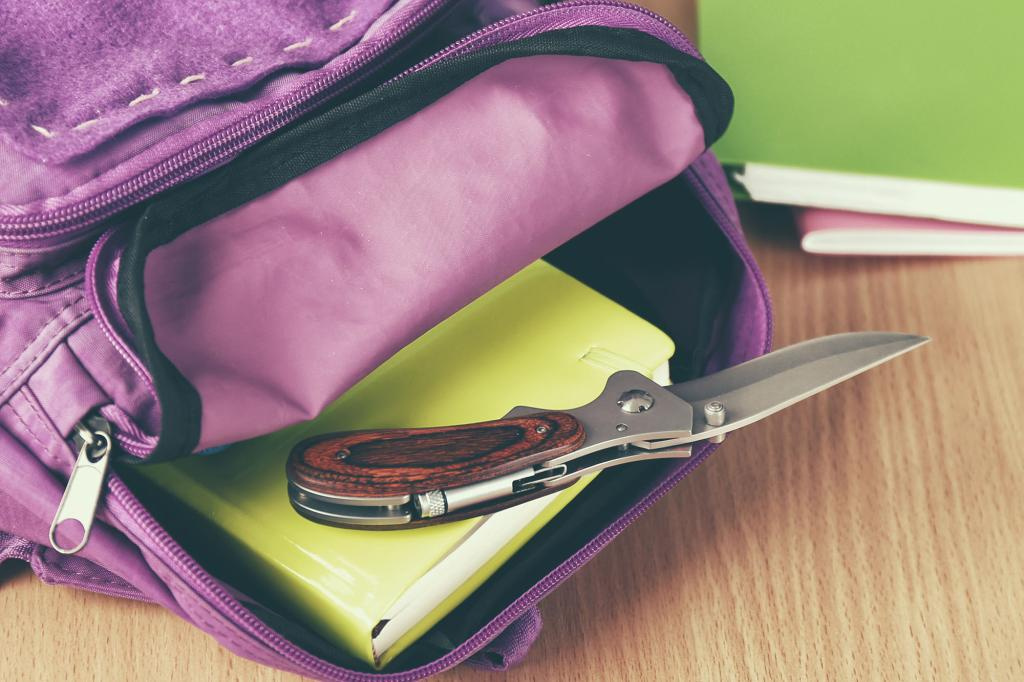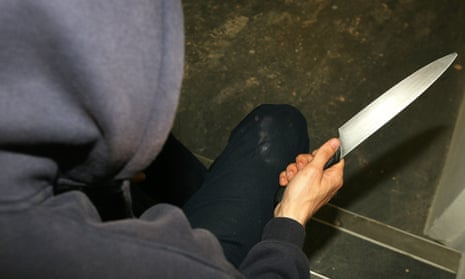
The spectre of youth violence is familiar to many UK schools. An astonishing 37% of teachers have experienced physical abuse or violence from pupils, with incidents that range from bodily contact (shoving, spitting, punching, kicking, headbutting, etc.) to outright attacks with weapons – most often common classroom objects like chairs and window poles.
With widespread youth violence comes equally widespread knife crime. Aside from a drop in 2020-21 owing to the COVID-19 pandemic and ensuing lockdown measures, knife crime has increased steadily across the UK since 2013. Figures from the Office for National Statistics (ONS) showed that police recorded 50,973 offences involving a bladed article in the year ending June 2024, representing an increase of 80% over the past 10 years.
This surge in knife crime and youth violence has made for a deadly combination in schools. Thankfully, the statistics here are more positive; the year ending March 2024 saw a 6% year-on-year decrease in cautions or sentences issued for knife or other weapon offences committed by children. However, rates of child offending are still 20% higher than they were 10 years ago, and for many schools, pupils carrying bladed weapons remains a persistent problem.
The severity of the issue has been thrust into the public eye this February as a 14-year-old pupil was found guilty of attempted murder after using her father’s multi-tool knife to stab two teachers and a fellow pupil at Ysgol Dyffryn Aman, a comprehensive school in Carmarthenshire, in an incident that made national media headlines.
In the months preceding the incident, the school’s deputy headteacher had written to the Welsh government to express his concern about worsening pupil behaviour, with four instances of pupils carrying weapons on school premises having been recorded in the 2023/24 academic year. Ysgol Dyffryn Aman is not alone in this.
The scale of the problem
Per a Sky News survey, around one in five UK secondary school teachers have witnessed pupils carrying knives or other bladed articles in school. The problem grows more acute in more socio-economically deprived areas, where double the number of teachers report witnessing pupils with knives compared to those in more affluent areas.
Worse yet, the same Sky News survey noted that only 15% of teacher respondents reported that they had received any formal training or guidance on how to deal with pupils bearing knives. With no means of addressing the problem, school staff in the worst-affected areas have been left in fear for their safety and that of the young people in their care. This represents a growing national problem.
The causes of knife crime among young people are varied and challenging to address. Whether the adverse childhood experience (ACE) at its root is neglect, trauma, exposure to violence at home or another factor, the pathway to a child carrying a knife is most often ‘invisible’ to school staff, who will not know they are at risk until their behaviour changes. Often the only practical measure available is preventative work to ensure this extreme is never reached.

On 5 February, the Youth Justice Board published its Knife Crime Insights Pack and, with it, a data-backed synopsis of children’s motivations in carrying knives, ranging from known ACEs to deprivation, exploitation by adults and manipulation by social media. These largely unseen causes illustrate plainly the urgency of schools taking pre-emptive action against youth knife crime, even if they do not consider themselves as having a violent behaviour problem.
Workable solutions
The Youth Justice Board’s findings includes an assessment of proposed solutions to youth knife crime, separating between effective and less effective methods based on their observed impact on rates of offending. These focus mainly on out-of-school measures, but their conclusions are worthy of leadership teams taking notice.
For instance, both media campaigns and stop-and-search measures were found to be ineffective in deterring knife crime – and in the case of the former, some evidence suggested they even led to an increase in knife-carrying. This could be taken to imply that young people resist more heavy-handed methods of deterring knife crime, which school leaders would do well to consider when applying their own safeguards.
By contrast, mentoring, social skills training and the use of sports programmes were all listed as likely to be effective in reducing violent crime among young people, including knife-related crime. Solutions like these would need to be implemented on a macro level across the country to have a substantial effect on overall crime statistics, but for schools, they represent a strong starting point when considering new anti-knife policies.
At the heart of the issue is a simple fact: carrying a knife is learned behaviour. This means schools have a pivotal role to play in educating their pupils so they will not endanger themselves or others.
Education against violence – and knife crime in particular – is just as necessary to young people’s safe development as sex and relationship education, and should be treated as such in the curriculum. In the absence of substantive changes from the Department for Education (DfE), schools must do what they can for the welfare of their own children and staff.
What can your school do?
Help your staff
A clear and unambiguous zero-tolerance policy towards knife possession on school grounds is an obvious place to start, but this should not be made to stand on its own. If the national survey data is any measure, a majority of school staff lack any formal training for how to respond to pupils carrying weapons. Addressing this should be a priority for any school intent on acting against violent pupil behaviour.
One fast, simple way to get staff up to speed on how to respond to violent incidents involves creating a set of guidelines for responding to violent behaviour in the first instance. Simple instructions for de-escalation of tension during a confrontation, legal methods of self-protection and prompt reporting of incidents after the fact are good basic principles which, if adopted, will equip teachers to deal with various kinds of violent behaviour, including knife possession.
However, there is no substitute for training from a professional organisation. A short course on the above points (even a handful of one-hour workshops) will make staff far more confident in responding when knife possession is witnessed or suspected.

The Ben Kinsella Trust offers a useful range of resources and training opportunities for teachers aimed at both educating young people on the harm caused by knife crime and equipping staff to identify and stop it in their settings. The British Red Cross also offer free resources on de-escalation, conflict avoidance and first aid for victims of knife attacks.
Both of these organisations’ websites are worth investigating further for useful safeguarding suggestions. Further complementary training to help staff recognise changes in behaviour, gang affiliation or discussion about weapons should also be considered.
Help your pupils
As outlined in the previous section, knife crime awareness needs to be enshrined in your curriculum.
Key areas such as the consequences of knife crime, staying safe and resolving conflicts should be covered in relevant subjects; Personal, Social, Health and Economic education is particularly well suited to this. There is no shortage of external organisations that would be willing to deliver workshops or talks on knife-related dangers; youth services and the police are just two obvious examples.
When it comes to addressing instances of knife possession among pupils, it is important to do so on a case-by-case basis. While every instance of knife possession is serious, the Youth Justice Board stresses that there are varied and complex reasons why a child might carry a knife and recommends individualised decisions rather than a blanket punishment (like, for instance, knee-jerk exclusion).
For victims or witnesses of knife-related incidents, support should be offered in the form of counselling services, mental health support and other safeguarding actions. For perpetrators, as mentioned, individualised measures are needed. Wherever possible, try to balance disciplinary actions with support; they may also be at risk due to coercion, gang involvement or other factors.
Parents should also be party to knife crime prevention. Transparent communication about new anti-knife crime measures – respecting legal considerations and parents’ privacy, of course – will help to reassure both them and their children. Consider sharing information with parents on knife crime awareness and early warning signs so that they can add an extra pair of eyes.
Help yourself
Finally, make sure that you remain mindful of what is best for your school with each change implemented.
Always ensure your staff follow DfE guidelines in the event that searching a pupil is necessary and keep them up to date on other relevant legislation. Debriefing after weapon-related incidents is an absolute must, as is a regular review of the successfulness of your policies. It is especially crucial to keep your designated safeguarding leads (DSLs) informed and work closely with them throughout.
And as always, networking can be immensely worthwhile. Reach out to your neighbouring schools and exchange best practices for handling knife crime. They may have experience that your staff and leadership team will find extremely useful.
If you have your own insights or success stories to share about addressing violent pupil behaviour, feel free to reach out to us or leave a comment.
Register for free
No Credit Card required
- Register for free
- Free TeachingTimes Report every month